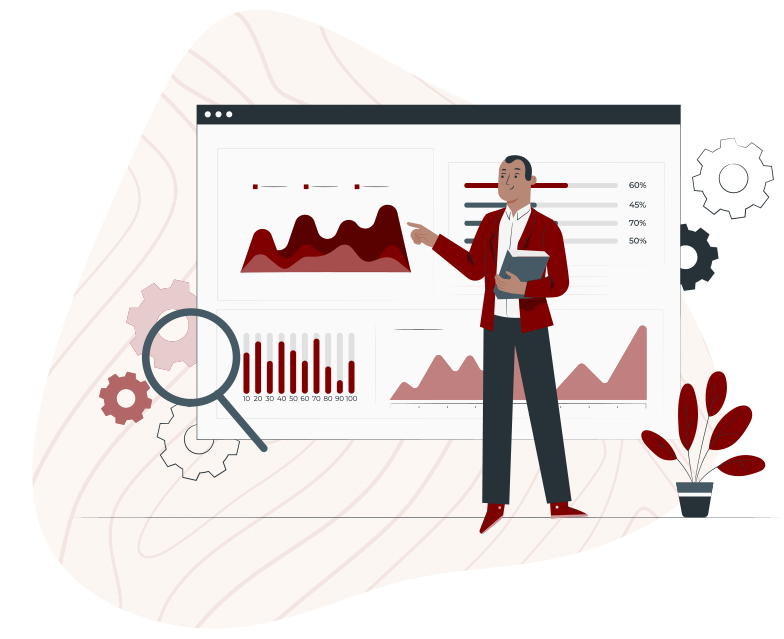Header Tag Optimization
Improve SEO & Content Structure
Header tags play a vital role in on-page SEO and content organization, helping both search engines and users understand the structure of a webpage. Using header tags correctly improves readability, user experience, and keyword relevance, making it easier for your content to rank in search results. At JP Marketing, we optimize H1, H2, H3, and lower-level headings to ensure your content is well-structured, search-friendly, and engaging for visitors.

What Are Header Tags & Why Are They Important?
Header tags are HTML elements used to define headings and subheadings within a webpage. They range from H1 to H6, with H1 being the most important and H6 the least. These tags help search engines determine the main topic of a page and its subtopics, making it easier to rank for relevant keywords.
From a user perspective, properly structured headers improve readability, guiding visitors through the content and allowing them to scan sections quickly. A well-organized page with clear headings reduces bounce rates and increases engagement, signaling to search engines that the content is valuable and useful.

The Importance of the H1 Tag in SEO
The H1 tag is the most important header tag on a webpage because it serves as the main title of the content. Search engines use the H1 tag to understand the page’s primary topic, so it should be descriptive, keyword-optimized, and highly relevant to the page’s content.
Each page should have only one H1 tag, as multiple H1s can confuse search engines and weaken SEO performance. The H1 should be closely related to the page’s target keyword but written naturally to provide a clear, engaging title that encourages visitors to read further. A strong H1 tag improves both search engine rankings and user engagement, making it a fundamental part of any SEO strategy.

The Difference Between H1, H2, H3, and Other Header Tags
Each header tag serves a distinct purpose in structuring content for both search engines and users. The H1 tag acts as the main title and should include the primary keyword. The H2 tags function as main section headings, breaking the content into logical segments that make it easier to read. H3 tags and lower-level headers provide additional subheadings, organizing information into subtopics within each section.
For example, a well-structured SEO blog post about “Best On-Page SEO Practices” might look like this:
- H1: Best On-Page SEO Practices to Improve Your Rankings
- H2: Why On-Page SEO Matters
- H2: Key On-Page SEO Factors
- H3: Optimizing Title Tags
- H3: Using Header Tags Correctly
- H3: Internal Linking Strategies
- H2: Common SEO Mistakes to Avoid
- H2: Final Thoughts & Next Steps
This hierarchical structure helps search engines crawl and index content efficiently while allowing users to scan and navigate the page with ease.

The Role of Header Tag Hierarchy in SEO
Maintaining a clear header tag hierarchy is essential for content structure and SEO optimization. A proper hierarchy ensures that search engines understand the relationships between topics and subtopics, leading to better rankings and user experience.
A well-structured page starts with an H1 tag, followed by H2 subheadings for major sections. H3 and lower-level tags further break down complex topics into digestible chunks, preventing content from becoming overwhelming. Google rewards well-structured content with higher rankings, making header tags a crucial element of on-page SEO success.

Common Header Tag Mistakes & How to Avoid Them
One of the most common mistakes is using multiple H1 tags on a single page. Each page should have only one H1, serving as the primary heading. Overuse of H1 tags confuses search engines and weakens SEO impact.
Another mistake is skipping header levels, such as jumping from H1 to H3 without an H2. This disrupts the page structure and makes it harder for Google to understand content relationships. Additionally, keyword stuffing in headers can lead to SEO penalties and reduce readability, so headers should be naturally written, engaging, and relevant.

Why Choose JP Marketing for Header Tag Optimization?
At JP Marketing, we understand the critical role header tags play in SEO and user experience. Our team ensures that every H1, H2, H3, and lower-level header is optimized to improve rankings, enhance readability, and boost engagement. We conduct in-depth keyword research, competitor analysis, and content audits to craft SEO-friendly header structures that help pages perform better in search results.
Whether you need a full content optimization strategy or just improvements to your existing header tags, we can help ensure your site is fully optimized for search engine success.

Ready to Improve Your SEO with Optimized Header Tags?
Header tags are a crucial part of any successful SEO strategy, and optimizing them can make a significant difference in how well your content ranks. If you’re looking to increase search visibility, improve readability, and drive more organic traffic, JP Marketing has the expertise to help.

“
Happy Clients Say About
JP Marketing

Become a Partner
Inquire Today
Have questions about becoming a white label reseller partner? Contact us today for more information.



